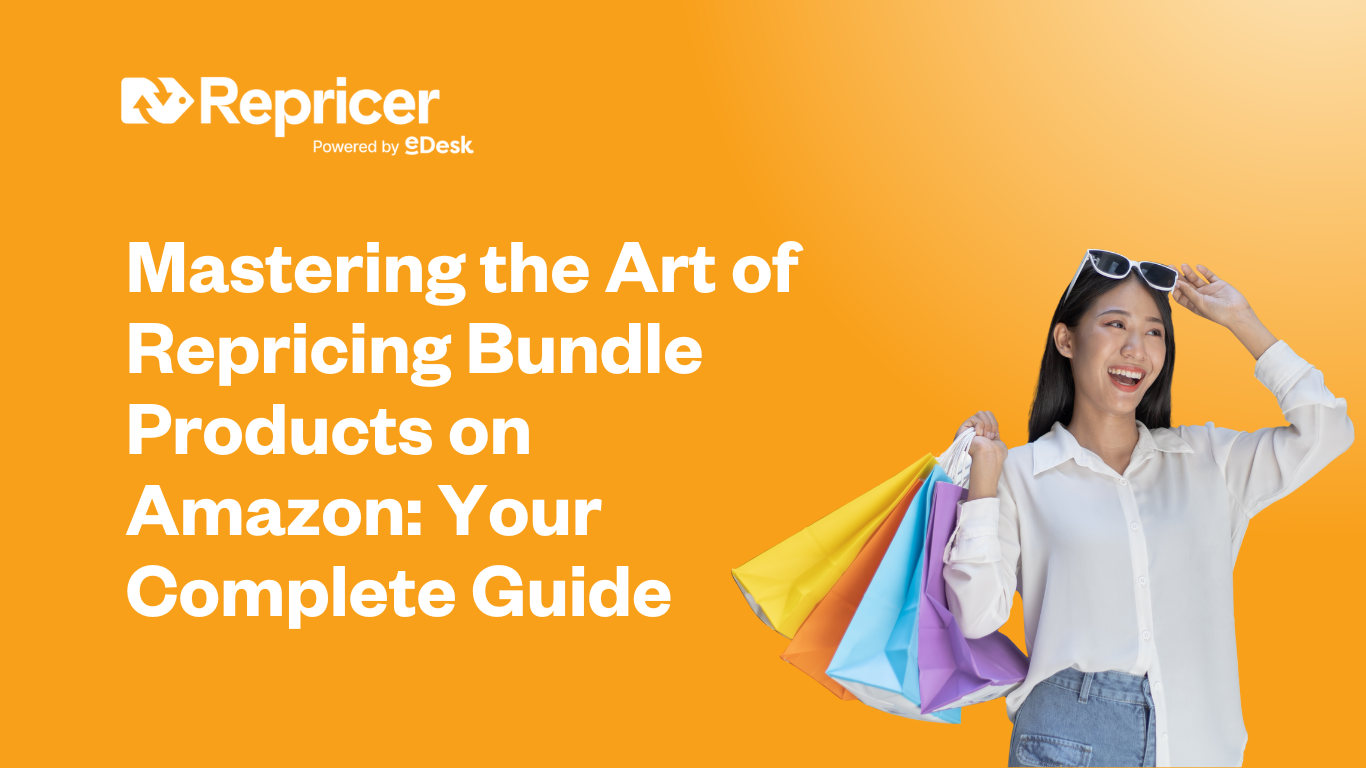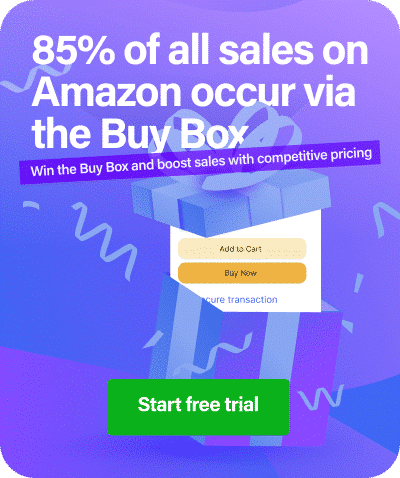You’ve carefully crafted the perfect product bundle, combining complementary items that customers love buying together. But then the inevitable happens—a competitor drops their price, or worse yet, someone starts selling individual components at rock-bottom prices. Suddenly, your carefully calculated bundle pricing strategy is in jeopardy, and your sales begin to slide.
If this scenario sounds familiar, you’re not alone. Bundle pricing represents one of the most complex challenges in Amazon selling today. Unlike single products, bundles require sellers to navigate intricate cost structures, identify true competitors, and balance profit margins across multiple items simultaneously.
In this comprehensive guide, we’ll explore the unique challenges of repricing bundle products on Amazon and provide you with proven strategies to maintain competitive pricing while protecting your profits.
Understanding the Complexity of Bundle Pricing
When it comes to repricing bundle products, Amazon sellers face challenges that simply don’t exist with individual items. According to Jungle Scout’s 2024 Amazon Product Pricing Report, the number of categories whose average product price increased during the first quarter of 2024 was four times higher than the year-ago quarter, making competitive pricing more critical than ever.
Why Bundle Repricing is Different
Bundle repricing requires a fundamentally different approach because you’re not just competing against identical products. Instead, you’re balancing several variables:
Combined Cost Calculations: Your bundle includes multiple products, each with its own procurement cost, storage fees, and profit margins. This creates a complex cost structure that requires careful calculation to ensure profitability.
Multiple Competitor Types: You’re competing against both other bundle sellers and individual component sellers. A customer might choose to buy your electronics bundle or purchase each item separately from different sellers.
Inventory Sync Challenges: When one component runs low on inventory, it affects your entire bundle’s pricing strategy and availability.
Identifying Your True Competitors
The first step in developing an effective Amazon bundle pricing strategy is understanding who you’re really competing against. This isn’t as straightforward as you might think.
Bundle vs. Individual Component Competition
Your primary competitors fall into two categories:
Direct Bundle Competitors: These are sellers offering the exact same combination of products or very similar bundles. These represent your most direct competition for the bundle market.
Individual Component Sellers: Customers often compare your bundle price against the total cost of buying each item separately. Even if individual sellers aren’t intentionally competing with your bundle, they’re still affecting your competitive landscape.
Using Data to Guide Your Competitive Analysis
Amazon’s Market Basket Analysis report can help you identify products frequently bought together, giving you insights into natural product pairings and potential competitive threats.
Consider setting up monitoring for:
- Direct bundle competitors with identical or similar product combinations
- Top-performing individual sellers for each component in your bundle
- Emerging bundle trends in your category
Calculating Bundle Costs and Margins
Accurate cost calculation forms the foundation of any successful repricer for bundled items strategy. Here’s how to approach this complex task:
Breaking Down Your Cost Structure
Individual Product Costs: Start with the base cost of each item in your bundle, including procurement, Amazon fees, and shipping costs.
Bundle-Specific Costs: Factor in any additional costs related to creating and managing the bundle, such as enhanced product photography, additional listing optimization, or customer service complexities.
Opportunity Cost: Consider the potential profit you’re giving up by bundling items versus selling them individually.
Setting Realistic Profit Targets
Many sellers make the mistake of simply adding individual profit margins together. Instead, consider:
- The convenience premium customers pay for bundles
- Volume discounts you can offer while maintaining profitability
- Common AOV increases from bundles ranging from 10% to 30%
Configuring Repricer Settings for Bundles
Setting up your repricer tool for bundles requires careful consideration of minimum and maximum price thresholds.
Establishing Minimum and Maximum Prices
Minimum Price Calculation: Your minimum should cover all costs plus a small safety margin. This includes:
- Total product costs
- All Amazon fees (referral, FBA, storage)
- A buffer for market volatility
Maximum Price Thresholds: Set maximums based on:
- Total value perception of the bundle
- Competitor pricing analysis
- Customer price sensitivity in your category
Advanced Repricing Strategies
Conditional Repricing Rules: Set different rules based on inventory levels. For example, if one component is running low, you might increase the bundle price to slow sales until you can restock.
Time-Based Adjustments: Consider seasonal fluctuations and shopping events when setting your repricing parameters.
Competitor-Specific Rules: Create different responses based on who’s changing their prices. You might react differently to a major competitor versus a smaller seller.
Virtual Bundle Repricing Considerations
With Amazon’s recent policy updates effective October 14, 2024, virtual bundles for consumables must now be created by the original manufacturer, making virtual bundle repricing increasingly important for eligible sellers.
Understanding Virtual Bundle Dynamics
Virtual bundles offer unique advantages for repricing:
- No physical packaging constraints
- Individual component inventory management
- Flexible pricing adjustments
However, they also present specific challenges:
Individual Component Tracking: Since if any item in the bundle runs out of stock, the bundle itself becomes unavailable, your repricing strategy must account for individual component availability.
Pricing Rule Compliance: The bundle’s total price must be equal to or less than the sum of each individual item’s price, which constrains your pricing flexibility.
Setting Up Repricing for Virtual Bundles
When configuring your repricer for virtual bundles:
- Monitor Individual Components: Set up alerts for inventory levels on each bundled item
- Coordinate Pricing Changes: Ensure bundle price adjustments align with individual product pricing
- Track Performance Separately: Virtual bundle sales are reported per component, which makes it challenging to track bundle-specific data
Multi-Pack Pricing Strategy on Amazon
Multi-pack pricing on Amazon requires a different approach from traditional bundles, as you’re dealing with quantity-based pricing rather than complementary products.
Volume-Based Pricing Models
Cost Per Unit Optimization: Calculate your optimal price per unit that encourages customers to buy larger quantities while maintaining healthy margins.
Competitive Positioning: Position your multi-pack pricing to compete effectively against both single units and other multi-pack offerings.
Inventory Management: Align your repricing strategy with inventory turnover goals to avoid overstock situations.
Leveraging Technology for Bundle Repricing
Modern repricing tools offer sophisticated features specifically designed for bundle management.
Essential Features to Look For
Multi-SKU Coordination: Tools like BQool offer conditional repricing, allowing you to switch between rules automatically and use different filters such as inventory, sales velocity, or the suppressed Buy Box.
Advanced Analytics: Look for tools that provide bundle-specific reporting and performance metrics.
Integration Capabilities: Ensure your repricer integrates well with your inventory management systems.
Best Practices for Tool Configuration
Regular Strategy Review: Amazon changes its prices every 10 minutes on average, using its proprietary dynamic pricing algorithm, so your repricing strategy should be equally dynamic.
Performance Monitoring: Track key metrics like Buy Box ownership, conversion rates, and profit margins specific to your bundles.
A/B Testing: Experiment with different pricing strategies to find what works best for your specific product combinations.
Common Pitfalls and How to Avoid Them
Learning from others’ mistakes can save you significant time and money in your bundle repricing journey.
Pricing Too Aggressively
One of the biggest mistakes sellers make is engaging in price wars without considering the impact on their entire product line. Remember that aggressive pricing on bundles can devalue your individual products as well.
Ignoring Inventory Levels
Failing to coordinate repricing with inventory management can lead to stockouts on popular bundles or overstock situations on slow-moving items.
Overlooking Customer Perception
Always consider how your bundle pricing affects customer perception of value. Sometimes, a slightly higher price with better positioning can outperform rock-bottom pricing.
Measuring Success and Optimization
Effective bundle repricing requires ongoing measurement and optimization.
Key Performance Indicators
Track these essential metrics:
- Bundle-specific Buy Box ownership percentage
- Average order value increases from bundle sales
- Individual component performance within bundles
- Customer feedback and return rates
Continuous Improvement Strategies
Regular Competitive Analysis: Schedule monthly reviews of your competitive landscape and adjust strategies accordingly.
Seasonal Adjustments: Align your repricing strategy with seasonal demand patterns and shopping events.
Customer Feedback Integration: Use customer reviews and feedback to refine your bundle offerings and pricing strategies.
Looking Ahead: Future of Bundle Repricing
As Amazon continues to evolve its platform and policies, staying ahead of trends becomes crucial for long-term success.
With over 68% of Amazon sellers being third-party sellers and 82% using FBA, the competition for effective bundle pricing will only intensify. Sellers who master the complexities of bundle repricing today will be best positioned for future growth.
Conclusion: Your Path to Bundle Pricing Success
Repricing bundle products on Amazon successfully requires a strategic approach that balances complexity with profitability. By understanding your true competitors, accurately calculating costs, leveraging the right technology, and continuously optimizing your approach, you can turn bundle pricing from a challenge into a competitive advantage.
The key is to start with solid foundations—accurate cost calculations, clear competitive analysis, and realistic profit targets. From there, the right repricing tools and strategies can help you maintain competitive positioning while protecting your margins.
Ready to take your bundle repricing to the next level? Start by auditing your current cost calculations and competitive positioning. With the right approach, bundle repricing can become one of your most powerful tools for driving growth on Amazon.





